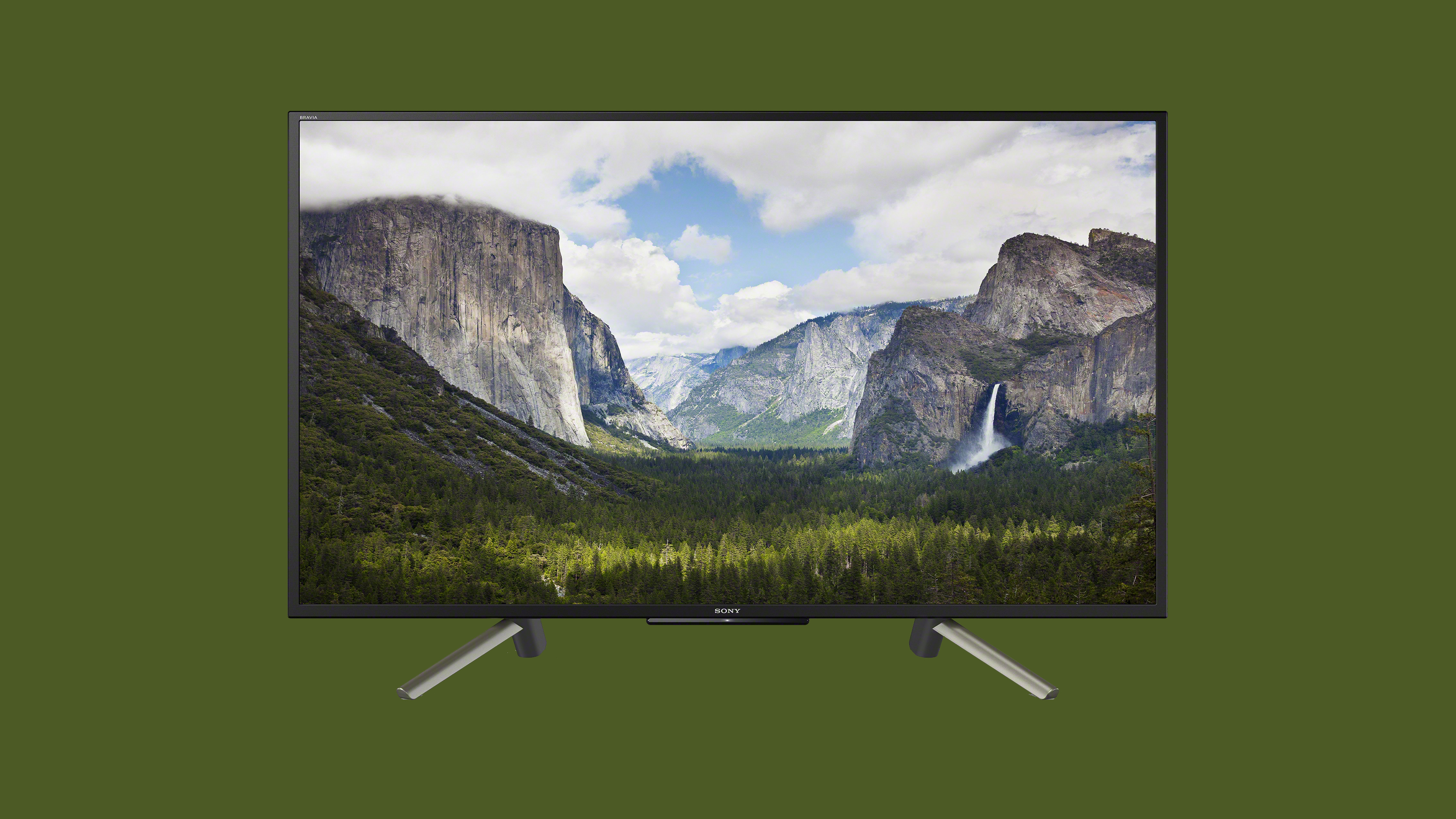Early Verdict
Pros
- +
HD HDR
- +
Sony X-Reality Pro Processing
- +
Sony Motionflow XR
Cons
- -
No 4K
- -
Limited smart functionality
- -
No specs yet
Why you can trust TechRadar
Not ready to make the leap into 4K just yet? Sony can sympathize. To please that section of its audience, Sony has just pulled the curtain off two new series of non-UHD screens - the WF66 (called the W66F in the States) and the RF45.
More to that point, the WF66/W66F are one of only two non-4K TV series in Sony’s new for 2018 range. They sit one step higher up the new range ladder than the new 43-inch RF45 model (covered in a separate article) chiefly because they bring some smart features to the party.
In case you’re curious, these smart features include support for Netflix, YouTube and the Freeview Play platform. The latter services delivers the catch-up TV apps for all of the UK’s main terrestrial broadcast platforms (the BBC, ITV, Channel 4 and Channel 5), all available through an electronic programme guide that can scroll back in time seven days as well as forwards.
Unlike Sony’s 4K TVs, however, the WF66’s smart features are not delivered with Android TV as an OS. That’s not necessarily a bad thing, though, given the clunky presentation and bugginess of the platform. It’s interesting to see, too, that Sony has gone for Freeview Play for its catch-up TV service on the WF66 instead of the rival YouView service found on Sony’s Android TVs.
So what do we think of the entry-level model right now? Read on to find out.
Design
The WF6 looks a little more glamorous than the entry-level RF45. Its frame is still a little wider than those you tend to get wrapped around more expensive TVs, but its build quality looks and feels slightly more premium. It’s given a bit more sparkle, too, by its angled feet, which are finished in a brighter, shinier silver metal finish than those underneath the RF45.
Connections include two HDMIs, USB ports capable of playing video, photo and music files, as well as both Ethernet and Wi-Fi network connection options.
Sign up for breaking news, reviews, opinion, top tech deals, and more.
The WF66 screens - which are available in 50-inch and 43-inch sizes - both feature native full HD resolutions of 1920x1080 pixels. More surprisingly, they also both support high dynamic range (HDR) playback in both the industry standard HDR10 format and the broadcast-focused HLG platform.
Most HDR TVs carry native 4K resolutions, of course. However, there are certainly sources out there that support HDR in HD.
The standard PS4 console outputs games in high definition HDR for one, for instance, while Netflix has shows - including its new Star Trek series - that are only available in HD but also enjoy HDR. The WF66/W66F also support HDR playback via their built-in YouTube app.

Performance
While Sony isn’t fond of providing its TVs’ claimed brightness outputs or contrast ratios, it’s safe to assume that the WF66/W66F screens won’t be bright enough to provide a truly explosive HDR performance. However, even a flavour of HDR’s extra brightness range and accompanying wide colour range should help the WF66/W66F stand out against much of the likely similarly priced competition.
The W66F/WF66’s potential picture prowess isn’t just about its full HD Resolution and HDR support, though. The set also boasts Sony’s X-Reality Pro video processing system, which we’ve seen in previous TVs delivering impressive upscaling of standard definition pictures, and superior colour finesse.
Plus, if you're planning on buying a screen for the World Cup, the W66F/WF66 has Sony’s Motionflow XR system for reducing the judder and blur associated with moving objects on LCD TVs.

Early verdict
As far as an entry-level TVs go, there’s a lot to like about the W66F/WF66. Adding HDR to the basic package is sure to appeal to those looking for a visual upgrade on the cheap, and it’s nice to see some of Sony’s higher-end TV tech make its way down the line.
We’ll have to wait to test the screen out for ourselves in our own home, but for now we’re cautiously optimistic about Sony’s introductory HDR TVs.

John has been writing about home entertainment technology for more than two decades - an especially impressive feat considering he still claims to only be 35 years old (yeah, right). In that time he’s reviewed hundreds if not thousands of TVs, projectors and speakers, and spent frankly far too long sitting by himself in a dark room.
What is a hands on review?
Hands on reviews' are a journalist's first impressions of a piece of kit based on spending some time with it. It may be just a few moments, or a few hours. The important thing is we have been able to play with it ourselves and can give you some sense of what it's like to use, even if it's only an embryonic view. For more information, see TechRadar's Reviews Guarantee.
